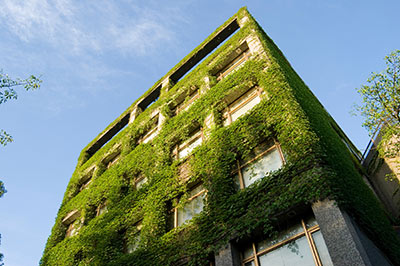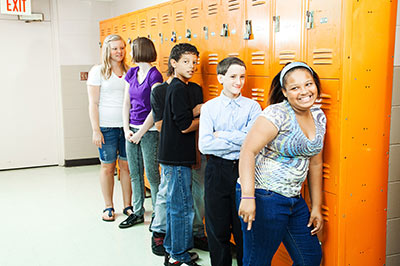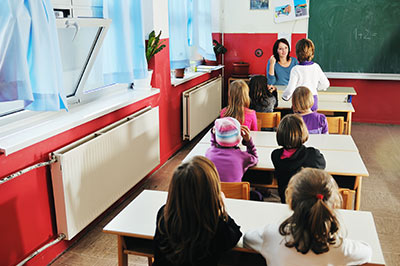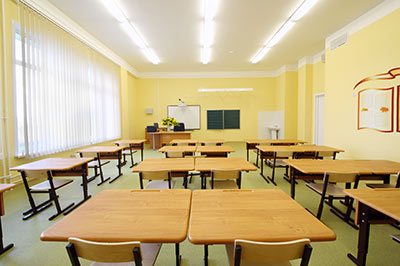Published by the International Code Council (ICC), ICC/NSSA Standard for the Design and Construction of Storm Shelters (ICC 500), is a referenced standard in the International Codes (ICodes). The ICC, in partnership with the National Storm Shelter Association (NSSA), formed a national committee in 2003 that developed and released a consensus standard to codify the design and construction requirements of tornado and hurricane storm shelters. The ICC 500 was first published in the summer of 2008 and updated in 2014. ICC 500 provides the minimum requirements to safeguard public health, safety, and general welfare relative to the design, construction, and installation of storm shelters constructed for protection from high winds associated with tornadoes and hurricanes. This standard is intended for adoption by government agencies and organizations for use in conjunction with model codes to achieve uniformity in the technical design and construction of storm shelters.
Tag: School Design
The Outdoor Classroom of Al Ghadeer Kindergarten
Travis R. Dunlap and Linda Lemasters.
Outdoor learning is a trending topic in education research, and the benefits of outdoor classrooms are increasingly viewed as indispensable. While it would seem that children in the 21st century spend less time outdoors than previous generations, researchers have reinvigorated conversation on the importance of our children’s relationship to natural environments. Exposure to the natural world is recognized increasingly as an integral component of students’ development and education, and outdoor classrooms are an instrumental way to foster the reconnection of students with nature.
Outdoor learning provides very positive outcomes in the cognitive, physical, and social development of students. Researchers have demonstrated numerous advantages for students’ learning experiences in natural environments. For example, children who have contact with nature tend to score higher on tests involving concentration and self-discipline.[1] A reverse correlation also exists: the lack of a connection to the outside may exacerbate Attention Deficit Disorder (ADD) in children.[2] Additionally, the physiological benefits of children’s involvement with nature cannot be ignored. For example, researchers have concluded that exposure to natural light reduces the risk of nearsightedness. Social and psychological benefits also are noted. As an example, when students play in a natural environment, their play is more imaginative, and these children show heightened language skills and greater ability for collaboration.[3] These are just a few of the many advantages of outdoor learning. Consequently, schools around the world are embracing the outdoor classroom model to maximize the related learning and behavior outcomes for students.
[1] Andrea Faber Taylor and Frances E. Kuo, “Coping with ADD: The Surprising Connection to Green Play Settings,” Environment and Behavior 33, no. 1 (2001): 54–77.
[2] Richard Louv, Last Child in the Woods: Saving Our Children From Nature-Deficit Disorder, Updated and Expanded edition (Chapel Hill, N.C: Algonquin Books, 2008), 48.
[3] Robin C. Moore and Herb H. Wong, Natural Learning: The Life of an Environmental Schoolyard. Creating Environments for Rediscovering Nature’s Way of Teaching. (Berkeley, CA: MIG Communications, 1997); Ingunn Fjortoft, “The Natural Environment as a Playground for Children: The Impact of Outdoor Play Activities in Pre-Primary School Children,” Early Childhood Education Journal 29, no. 2 (January 2001): 111–17.
Impact of views to school landscapes on recovery from stress and mental fatigue
Dongying Li, William C. Sullivan.
Previous research has demonstrated positive associations between the greenness of high school land- scapes and school wide academic performance. We do not known, however, if green landscapes cause better performance or if the association between the two is a product of self-selection. If there is a causal relationship, the pathways through which green school landscapes affect student performance remain unclear. We hypothesize that views onto green landscapes help students recover from mental fatigue and stress. To test these hypotheses, we conducted a randomized controlled experiment with 94 high school students at five high schools. Participants were randomly assigned to classrooms without windows or with windows that opened onto a built space or a green space. Participants engaged in typical classroom activities followed by a break in the classroom to which they were assigned. Attentional functioning was measured using Digit Span Forward and Backwards. Physiological stress levels were measured by skin conductance, body temperature, pNN50 (the proportion of the number of pairs of successive NNs that differ by more than 50 ms divided by the total number of NNs) and LF/HF (the ratio between low- frequency peak and high frequency peak). Results demonstrate that classroom views to green landscapes cause significantly better performance on tests of attention and increase student’s recovery from stressful experiences. A lack of mediation effect demonstrates that attention restoration and stress recovery are two distinct processes. Implications for school site selection, design and renovation are discussed.
Defining Capacity
DeJong & Craig
How many students can a building accommodate? This question often arises, and in the development of a facility plan, it can be one of he most debated issues. The answer to this question can impact the need for constructing new buildings as well as additions and can have a profound impact on revenue especially if projects are funded through state or other agencies.
Building a Bridge to Knowledge for Every Child: How It Could Work
Pace and Gardner, 1997
When visitors walk through King School, they are often surprised. It is very different from the schools they attended and from others they have seen. Instead of children sitting quietly in rows facing the teacher at the front of the room, they find youngsters returning from a field study with jars and basins full of pond specimens.
They see students working in cooperative groups, creating visual aids for a day of student-led workshops on environmental issues for the entire school community. Another group is rehearsing a musical about South Africa, called Sarafina, on the stage in the performing arts center. Children of all ages are updating their digital portfolios at computer stations throughout the school to prepare for student-teacher-parent conferences.
Space as a Change Agent, Chapter 1 in Learning Spaces
Spaces are themselves agents for change.
Changed spaces will change practice.1 Learning is the central activity of colleges and universities. Sometimes that learning occurs in classrooms (formal learning); other times it results from serendipitous interactions among individuals (informal learning). Space—whether physical or virtual—can have an impact on learning. It can bring people together; it can encourage exploration, collaboration, and discussion. Or, space can carry an unspoken message of silence and disconnectedness. More and more we see the power of built pedagogy (the ability of space to define how one teaches) in colleges and universities.
Campus as a Living Lab
Central New Mexico Community College
Campus as a Living Lab began at CNM in Spring 2014. The intention of Campus as a Living Lab is to utilize campus facilities, maintenance, and operations as opportunities for students to learn both existing course content and sustainability concepts while helping the college to reach its sustainability goals.
Learning Spaces
Oblinger, 2006
Space, whether physical or virtual, can have a significant impact on learning. Learning Spaces focuses on how learner expectations influence such spaces, the principles and activities that facilitate learning, and the role of technology from the perspective of those who create learning environments: faculty, learning technologists, librarians, and administrators. Information technology has brought unique capabilities to learning spaces, whether stimulating greater interaction through the use of collaborative tools, videoconferencing with international experts, or opening virtual worlds for exploration. This e-book represents an ongoing exploration as we bring together space, technology, and pedagogy to ensure learner success.
The Top Color Schemes for a School Classroom
Mendez, 2016
The palette of colors in a school classroom is as varied as the colors of the spectrum. The walls are painted from warm to cool and accented with shades and hues that contrast in color. During the 50's, 60' and 70's school's painted the walls a pale green or creamy white and there was little variation in color across the nation.
The Impact of Color on Learning
Engelbrecht, K. (2003)
This paper is the result of research conducted in response to a client’s question of the importance of color in their new school facility. The resulting information is a compilation of studies conducted by color psychologists, medical and design professionals.











